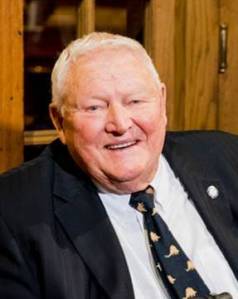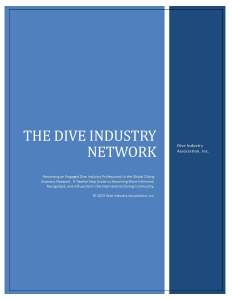 Dive Industry Network Series
Dive Industry Network Series
Chapter 10: Become a Non-Profit Volunteer
by Gene Muchanski, Executive Director
Dive Industry Association, Inc.
One major thing that could unite and grow the diving industry is volunteering your time and talents to non-profit organizations like the Dive Industry Foundation. The Dive Industry Foundation is a non-profit, tax-exempt, 501(c)(3) charitable organization dedicated to promoting economic development in the worldwide diving community. The Foundation maintains a full-time office in Melbourne, Florida and operates with an all-volunteer staff. It sponsors DIVE LOCAL, conducts industry surveys, exhibits at diving trade and consumer shows, and conducts business improvement seminars and workshops for diving business owners and their employees. It is establishing a Business Reference Library with books and magazines from the diving industry. Many of the projects the Dive Industry Foundation undertakes are time consuming, labor intensive, and expensive. The short-term economic return to the Foundation, or for any dive business for that matter may be negligible, but the long-term economic returns to the diving industry as a whole could be substantial. That is the main reason it is so important for each member of the global diving community to consider volunteering a small amount of their time, money, and manpower to a non-profit organization like the Dive Industry Foundation.
In the previous chapter (#9) we talked about the need to make a monetary donation to the Foundation in order to pay for things that cost the organization money. However, the Foundation has many other needs that can only be met with volunteer labor and participation. We need Dive Retailers to fill out our Retail Center profile and update it yearly. We need them to collect Business Cards from all their Manufacturers, Sales Reps, Training Consultants, and Travel Vendors and mail them to us on a monthly basis. We need Manufacturing and Training Sales Reps to fill out our Sales Representative Profile and update it annually and collect Business Cards of all their Retail Stores and their Instructors. We could use complimentary booth space at dive, surf, boat, and adventure travel shows and we need media coverage in the dive industry media. There are a lot of similarities to volunteering and just being engaged in the daily operation of the global diving community.
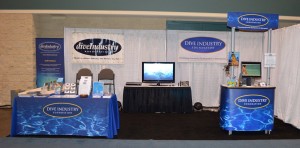 One of the most important needs of the Foundation is for volunteers to staff our booths at trade and consumer shows. We have developed guidelines as to what is required for our booth volunteers based on discussions we have had with show producers over the years. Show Producers want to sell booth space, but sometimes the high price of the space is prohibitive to many small business owners who need to exhibit at their local consumer dive shows. The travel industry understands this very well. A number of Tourism Boards pay for booth space and send one of their delegates to supervise their local resorts and dive operators who supply the labor for booth staffing. As long as the booth design reflects the Tourism Board’s identity, this concept becomes a WIN – WIN – WIN situation for the show producer, tourism board, and the local dive operator. Our goal for the Foundation is to continue to exhibit at local dive, surf, adventure travel, boat, and outdoor shows to promote the diving industry. We are looking for volunteers to staff our booth along with other local dive business owners. In this way, we are showing support for the local show, working with the local business community, and promoting the diving industry to the local diving and non-diving community.
One of the most important needs of the Foundation is for volunteers to staff our booths at trade and consumer shows. We have developed guidelines as to what is required for our booth volunteers based on discussions we have had with show producers over the years. Show Producers want to sell booth space, but sometimes the high price of the space is prohibitive to many small business owners who need to exhibit at their local consumer dive shows. The travel industry understands this very well. A number of Tourism Boards pay for booth space and send one of their delegates to supervise their local resorts and dive operators who supply the labor for booth staffing. As long as the booth design reflects the Tourism Board’s identity, this concept becomes a WIN – WIN – WIN situation for the show producer, tourism board, and the local dive operator. Our goal for the Foundation is to continue to exhibit at local dive, surf, adventure travel, boat, and outdoor shows to promote the diving industry. We are looking for volunteers to staff our booth along with other local dive business owners. In this way, we are showing support for the local show, working with the local business community, and promoting the diving industry to the local diving and non-diving community.
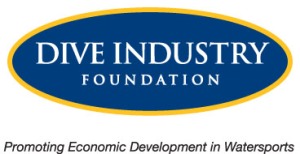 Needless to say, the Dive Industry Foundation has over 20 years of experience in exhibiting at local dive, surf, and travel shows. Our strength has always been the extensive pre-show, at-show, and post-show marketing we have done for the show producers, exhibitors, and attendees, but our Achilles’ heel has been the cost of attending these shows and the commitment in manpower that is required. Even with a complimentary booth, each show or event ends up costing a few thousand dollars when you consider the cost of airfare, hotel, and food. But that is part of the cost of supporting and promoting local diving communities and the whole diving industry. The one thing I have learned from successful dive shows is that you not only need the support of the local diving community to have a successful show, but you also need to support the local diving community in return. Exhibitors will purchase booth space, sponsors will pay for exposure, speakers will give their presentations for free, and volunteers will donate their labor, but if show producers are not spending money on advertising the show and promoting the local diving community, you’ll get very few attendees and no support from the local community. It’s all a matter of good stewardship, which is defined as the responsible management of resources entrusted to one’s care.
Needless to say, the Dive Industry Foundation has over 20 years of experience in exhibiting at local dive, surf, and travel shows. Our strength has always been the extensive pre-show, at-show, and post-show marketing we have done for the show producers, exhibitors, and attendees, but our Achilles’ heel has been the cost of attending these shows and the commitment in manpower that is required. Even with a complimentary booth, each show or event ends up costing a few thousand dollars when you consider the cost of airfare, hotel, and food. But that is part of the cost of supporting and promoting local diving communities and the whole diving industry. The one thing I have learned from successful dive shows is that you not only need the support of the local diving community to have a successful show, but you also need to support the local diving community in return. Exhibitors will purchase booth space, sponsors will pay for exposure, speakers will give their presentations for free, and volunteers will donate their labor, but if show producers are not spending money on advertising the show and promoting the local diving community, you’ll get very few attendees and no support from the local community. It’s all a matter of good stewardship, which is defined as the responsible management of resources entrusted to one’s care.
According to GuideStar, there are 1.8 million IRS-recognized tax-exempt organizations in addition to thousands of faith-based nonprofits. With so many nonprofits to choose from, how do you know which ones to support? Dive Industry Professionals can register with Candid, a 501(c)(3) nonprofit organization, for free GuideStar Basic Research. GuideStar is known in philanthropy circles as the Premier destination for nonprofits and nonprofit research. You can look up your favorite nonprofit and have access to the most complete data available, to help you make more informed decisions about being a donor.
There are many non-profit organizations in the global diving community. We have listed a few of them on our DIVE LOCAL website. Six of the non-profits have stepped up to help us promote the DIVE LOCAL concept by joining the Dive Industry Association. Our goal is to promote the non-profits in our industry that are doing good work for the environment, marine animals, diver safety, disabled veterans’ programs, marine scholarships, and a number of other good causes that are available to us as ocean ambassadors. As Good Stewards of the environment and its marine inhabitants, we need to educate ourselves on what makes a non-profit organization a good organization and worthy of our generous donations in time, money, and manpower. With the help of Nonprofit Search Companies like GuideStar we can view non-profit reports and tax returns of these non-profits and get in contact with donors and grant makers to help us complete our mission. With the help and guidance of 21st century software and media companies we can introduce and provide better and more sophisticated marketing tools to our industry businesses.
There is so much we need to do to reach our goals, and yet it only takes a little time, money, manpower, and a plan, from everyone in the industry. The harvest is indeed plentiful, but the volunteer workers are few. Consider this a recruitment for you to become a non-profit volunteer.
For more information, contact Gene Muchanski, Executive Director, Dive Industry Foundation, 2294 Botanica Circle, West Melbourne, Florida 32904. E-mail Gene Muchanski at gene@diveindustry.org
# # #


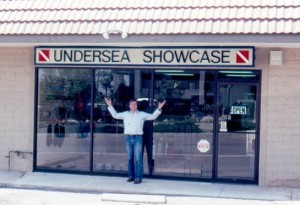







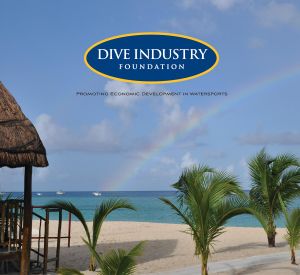 Preserving Our Diving History
Preserving Our Diving History